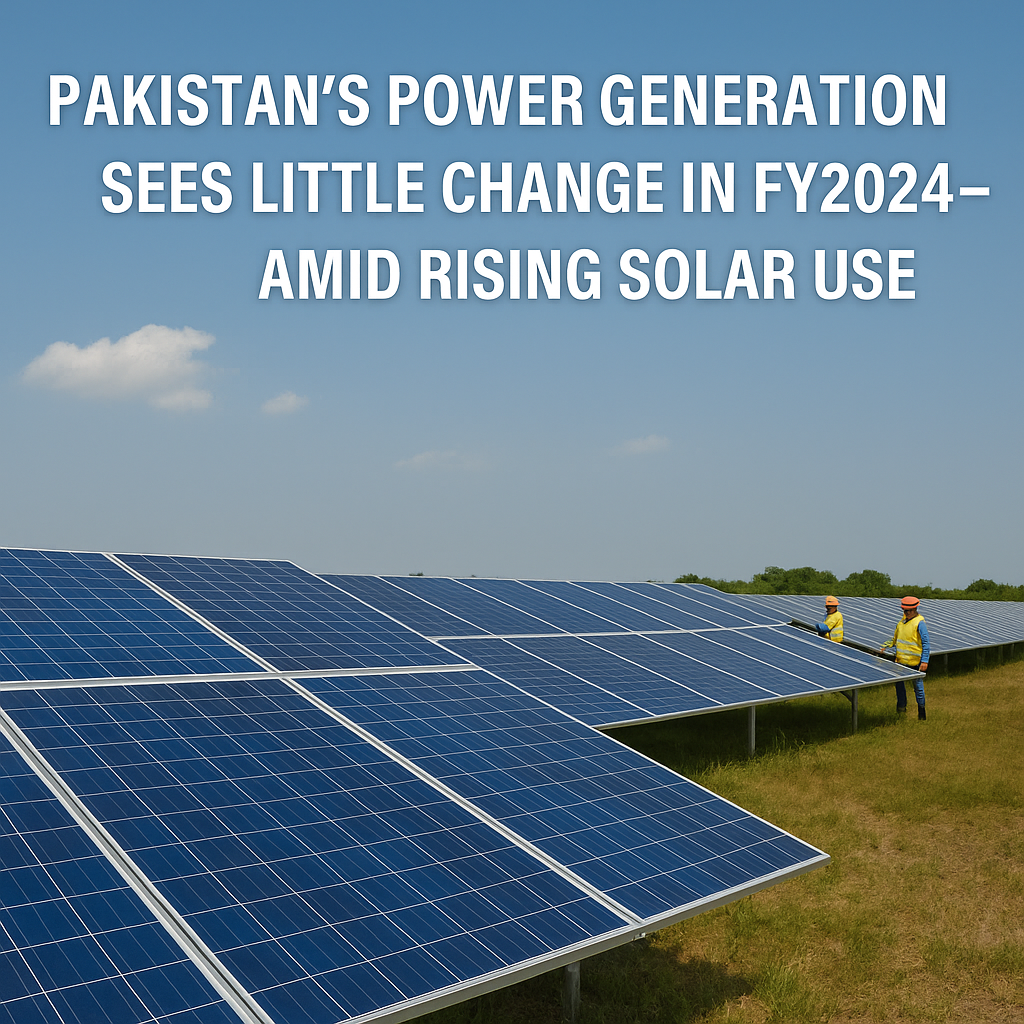Overview
Pakistan’s total electricity generation in fiscal year 2024–25 remained almost unchanged compared to the previous year, as per the latest government statistics. A combination of increased solar power adoption and declining industrial activity has led to stagnant growth in the national power supply.
Pakistan’s Power Generation Summary (FY24 vs FY25)
| Metric | FY2023–24 | FY2024–25 | Change |
| Total Power Generation (GWh) | 127,165 GWh | 127,160 GWh | -0.004% |
| Average Fuel Cost | Slightly lower | Decreased by 2% | Slight decrease |
| Solar Energy Adoption | Increasing | Continued rise | Continued growth |
| Industrial Power Demand | Stable | Declining | Declined |
Fuel Costs See Marginal Drop
The average fuel cost per unit of power generation dropped by around 2% year-on-year. This reduction comes as a result of increased reliance on cost-effective energy sources like solar power and lower demand from industries due to economic slowdowns.
Industry Turns to Self-Generation
Experts note a visible trend among industrial consumers shifting toward off-grid power generation. Many large manufacturing units are investing in solar and other renewable technologies to reduce reliance on the national grid and escape rising capacity charges.
Consumers Still Paying for Idle Capacity
Despite flat power demand, electricity consumers continue to face the brunt of high bills. This is largely due to capacity payments—charges paid to power producers regardless of actual power use. These fixed costs are built into monthly electricity bills and remain a burden even as on-grid power consumption decreases.
Conclusion
Pakistan’s power sector is at a turning point. While the shift to renewable energy sources like solar is a positive development, stagnant generation and ongoing capacity payments highlight the need for systemic reforms. To truly reduce the cost burden on consumers, there must be an overhaul of existing power purchasing agreements and a focus on flexible, demand-based power generation models.
SEO Tags (suggested):
Pakistan electricity generation 2025, solar adoption Pakistan, industrial energy self-generation, capacity payments Pakistan, average fuel cost electricity, renewable energy in Pakistan, Nishtar Hospital solar, national grid electricity Pakistan, electricity price trends 2025
